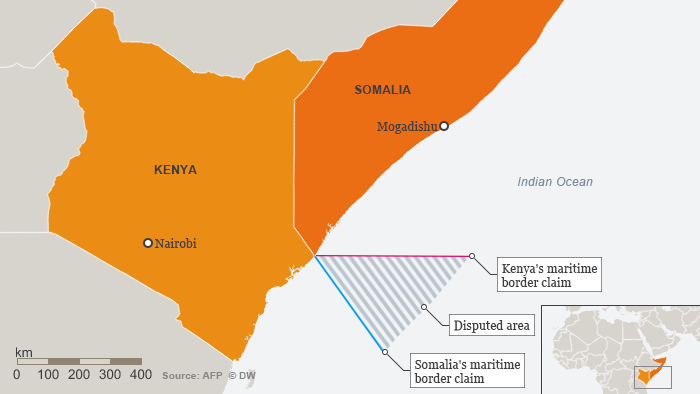Somalia to challenge ICJ jurisdiction petition by Kenya over Maritime case

Somalia and Kenya will make their oral submissions at the International Court of Justice Monday following objections raised by Kenya October 2015 regarding the jurisdiction of the Court over the maritime case filled by Somalia in 2014.
In a statement from The Hague based court May this year, the hearings will concern solely the preliminary objections raised by Kenya and run from Monday to Friday with a break on Thursday.
Somalia presented its written submissions February this year following preliminary objections by Kenya on the jurisdiction of the court and the admissibility of the case. The Court noted in May this year the proceedings on the merits of the case had been suspended in accordance with Article 79; paragraph 5 of the Rule of the Court.
Somalia filed proceedings at the UN Court in August 28, 2014 requesting the Court to determine, on the basis of international law, the complete course of the single maritime boundary dividing all the maritime areas appertaining to Somalia and to Kenya in the Indian Ocean, including the continental shelf beyond 200 nautical miles.
It further sought the Court’s intervention to determine the precise geographical co-ordinates of the single maritime boundary in the Indian Ocean.
While Somalia considers the maritime boundary is based on an equidistance line, Kenya on its part argues the boundary should follow the parallel of latitude which it has been used as the boundary since at least 1924.
Kenya also argues in its October 7, 2015, it has exercised uncontested jurisdiction over the disputed maritime areas since it first proclaimed its Exclusive Economic Zone (EEZ) in 1979.
In its preliminary objections, Kenya has argued the Court does not have the jurisdiction over the case since the two parties to the case had earlier agreed on an alternative method.
Kenya cites the 2009 Memorandum of Understanding between the two countries noting the pact had proposed the final settlement would only be after the UN Commission on the Limits of the Continental Shelf has established the outer limits of that maritime boundary
“Kenya’s declaration recognizing the Court’s jurisdiction specifically excludes disputes where, as here, the parties have agreed to another method of settlement,” Kenya’s AG Githu Muigai said in a statement ahead of the proceedings Monday.
But Somalia’s Parliament in August 2009 rejected the MOU and any subsequent future demarcation and delimitation talks with any state including Kenya. Somalia also petitioned the Court over what it termed as failure by Kenya to attend any talks concerning possibilities of out of court settlements.
“The inability of the Parties to narrow the differences between them, and the failure of the Kenyan delegation to attend the final meeting, have made manifest the need for judicial resolution of this dispute,” Somalia said in its application instituting proceedings in 2014.
The dispute over the maritime border by the two countries is further buttressed by the oil resources which abound in the disputed areas.
Kenya 20 oil blocks in the Indian Ocean and risks surrendering three which lie in the contested area should it lose in the case.
Both countries have hired some of the finest legal minds to secure their interests in the Court whose verdict could be delivered in 2017. Somalia is represented by Paul Reichler of Foley Hoag LLP, New York and French lawyer Prof Allain Pellet.
Led by the AG Githu Muigai, Kenya is enlisting the services of Prof Payam Akhavan (American), Prof Vaughan Lowe QC (British), Prof Alan Boyle (British), Prof Mathias Forteau (French) and Ms Amy Sanders (British).
Kenya and Somalia ratified the United Nations Convention on the Law of the Sea in 1989. Somalia recognized the compulsory jurisdiction of the Court in April 11, 1963 while Kenya did the same in April 19, 1965.